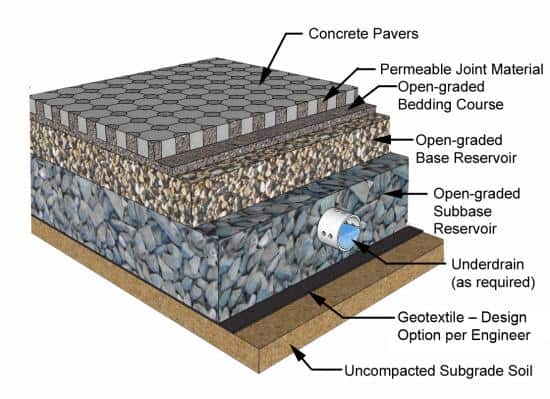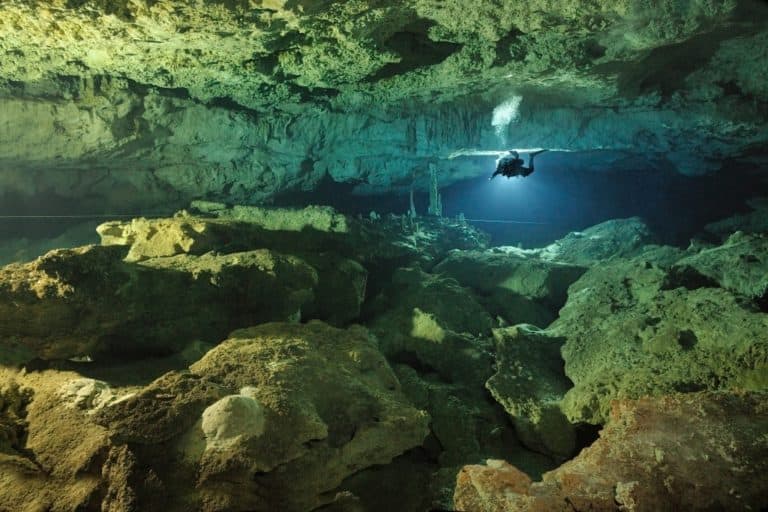How Green Infrastructure Could Change Construction, and the World
How Green Infrastructure Could Change Construction, and the World
The groundswell of one concept could finally awaken the industry of infrastructure design from its long, concrete-gray slumber.
Green infrastructure is that concept, and every landscaper interacts with it — whether they know it or not.
In plain terms, green infrastructure is nature. The entire ecosystem and all its functions contribute to it. Geology, soils and roots, plants, waterways, insects, animals, us, and the atmosphere are its ingredients.
But green infrastructure also provides a creative framework that we can use to shape the world around us as designers. By working with it, we can emulate, restore, and directly use natural processes in buildings, roads, parks, and anything else we design.
The idea that nature contains its own infrastructure that we can adopt is relatively new. However, the economic value of ecosystem services like food provision and climate resilience is well-established.
Green infrastructure might be key to unlocking the solid foundation and bright future we all aspire to.
Gray Infrastructure
Building nature-focused systems addresses a glaring weakness, especially in the United States. Lawmakers found common ground in 2021’s Bipartisan Infrastructure Law, which pledged $350 billion to update aging public resources. The American Society of Civil Engineers (ASCE) had graded roads and other government-owned infrastructure a D+ by the time of the law’s passage.
This “gray” infrastructure usually bypasses natural systems and, as a general rule, weakens over time. Sewer systems are a great example of critical infrastructure becoming obsolete in some areas.
Stronger storms and shifting seasons have contributed to catastrophic floods in cities from New York to Karachi, Pakistan. But the concrete-and-steel drainage systems built to divert water from these largely impervious-covered cities are aging past their useful life, a 2019 study in the journal Resources, Conservation and Recycling found. They face scaling and maintenance challenges because they block nature’s hydrological cycle in order to create their own.
Green Infrastructure
Systems that mimic and/or utilize nature’s more potent ability to absorb and redirect stormwater can help. Green infrastructure is any built system that supports these or other natural processes. Permeable pavement, green roofs, and bioswales are popular examples.
Most of us are familiar with green roofs, which utilize plants to cool down otherwise unused space on buildings. Terraced designs with planted balconies can accompany green roofs to reduce wind tunnel effects in dense urban developments and provide even more shade. Finally, shade canopies like the louvers in the photo at the top of this page perform similar functions.
Permeable pavement can replace concrete in some applications to increase “infiltration,” or soaking, of water into soils. Benefits include slowing the pace of stormwater runoff, and increasing water filtration.
 Permeable paver design; (photo/Liangtai Lin via Flickr)
Permeable paver design; (photo/Liangtai Lin via Flickr)
Bioswales, too, slow and filter stormwater. But they use plantings, root structure, and buried drainage systems to do it. Bioswales can replace common concrete drainage channels to function more like natural tributaries. The plants retain and decompact the soil, which allows efficient absorption of stormwater, and a buried, permeable drainpipe channels the runoff to a river or reservoir.
This engineering concept is called green stormwater infrastructure. And in areas like Central Texas, where flooding and droughts are both problems, it can remedy both.
This illustration from the Hill Country Alliance below describes how our natural and built systems can work together.
In our limestone karst geology, underground aquifers store groundwater. Rainwater fills them by “infiltrating,” or soaking into, the soil, then filtering through the porous rock below.
The left side of the diagram represents our rangelands. The soil in these high plateaus absorbs some stormwater, and the rest drains down to rivers like the Pedernales and the Colorado.
Cities like Austin then build infrastructure to direct and divert it, like the reservoir on the right side of the diagram.
The aquifer can refill through seepage, but compacted soils and impervious ground cover increase runoff and restrict infiltration. That makes recharge zones highly important, as the center of the illustration shows.
Dense native plants in these areas decompact the soil as roots grow downward toward the aquifer below. So when rain falls or drains into the area, it filters underground more directly.

A diver in a karst aquifer; (photo/International Year of Caves and Karst)
OK, But Why Does it Matter?
Imagine cities in our area engineered toward aquifer recharge. Green roofs and terraced buildings cool impervious surfaces and reduce Structures like bioswales and permeable pavement loosen the concrete-and-steel grids that compact soils and shed water quickly.
Direct results include healthy, absorbent soils with stronger plant and wildlife communities. Benefits cascade from there.
Aquifers recharge faster and more regularly. It’s hard to overstate the upside of this function, but easy to illustrate it with one statistic: 55% of all Texas water comes from aquifers (as of 2019).
Beyond that, trees and understory plants thrive, collecting CO2 and cooling off the surrounding surfaces. These green areas also support pollinators and pest predators, like spiders and bats. Humans enjoy the boost in mental and emotional well-being that proximity to nature brings, which is well-documented.
Most vitally, green infrastructure makes our communities resilient rather than vulnerable to extreme weather. Areas with healthier soils and better drainage will withstand floods better. Shadier surfaces add comfort in extreme heat and help reduce convection in heat islands. And a bigger underground water supply can provide security during severe droughts.
Examples at scale exist increasingly, all over the world.
Large-scale opportunities to completely replace concrete structures with natural solutions exist, too. One such strategy is natural streambank stabilization of waterways that function as drainage.
Streambank stabilization almost always requires some infrastructure. Populated areas change these waterways, often increasing water load and associated erosion.
The gray infrastructure method is to turn them into concrete troughs. But green methods like elevated soil lift (ESL) construction and selective planting can also stabilize these channels’ banks. Like concrete, this solution provides critical water diversion. But it creates absorption and wildlife habitat that concrete does not.
Not only that, but because it is alive, an engineered, planted streambank will strengthen over time rather than weaken. In fact, this is the case in all green infrastructure with proper implementation and plant selection.
While gray infrastructure still has viable applications for the foreseeable future, green infrastructure can help conserve the natural resources that will protect that future.
Public funding for conservation in Texas over the last three decades adds up to $2.2 billion. Studies have shown that every $1 invested in conservation returns $4 to $11 in ecosystem services like clean air and water and reduced flood risk. And every $1 invested in land conservation for water protection helps avoid $6 in water infrastructure costs.
“Nature-based solutions can be part of the solution,” the Environmental and Energy Study Institute said. “They have a smaller carbon footprint than gray infrastructure and usually sequester carbon — plus they literally grow over time!”

